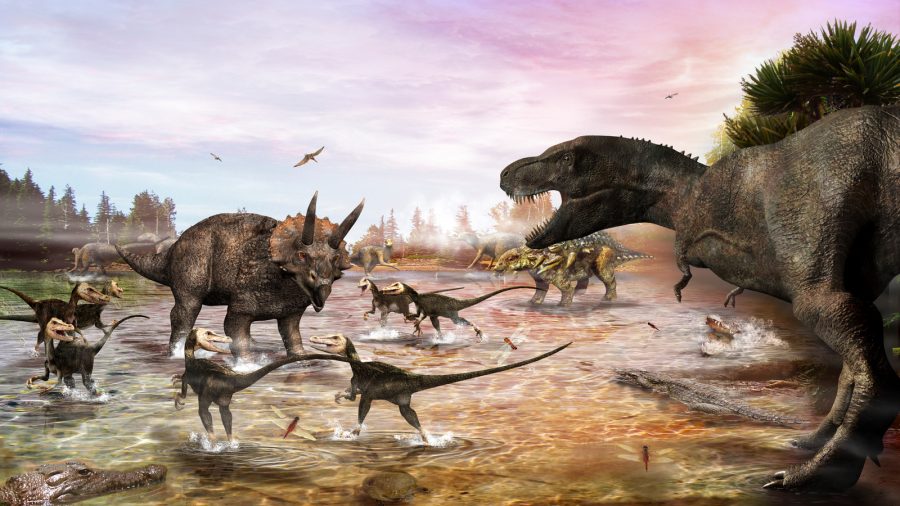As CO2 emission levels increase, a geophysicist from the Massachusetts Institute of Technology calculated “thresholds of catastrophe” in Earth’s carbon cycle. He predicted that humans will have added about 310 gigatons of carbon to the oceans by the end of the century, which could make the planet enter into “unknown territory.” Mass extinctions events could follow throughout a period of 10,000 years, according to a paper published in Science Advances.
The fifth mass extinction, known as the Cretaceous-Tertiary extinction, took place about 66 million years ago.


Professor Daniel Rothman analyzed data from the last 540 million years. He looked at significant changes in Earth’s carbon cycle and detected two thresholds that could cause environmental instability if exceeded. Beginning next century, if extinctions continue, big disruptions will occur at rates faster than ecosystems can adapt, the paper reveals.
Rothman looked at geochemical studies conducted in the past so he could identify instances where the carbon cycle experimented significant changes.
Once he selected 31 events, including the five mass extinctions that have taken place on our planet, the geophysicist came up with a formula that allowed him to measure the total amount of carbon added to the oceans during each disruption in the carbon cycle. He then realized that a particular threshold needed to be crossed for a sixth mass extinction to occur.
It is very likely that Earth’s current conditions will lead the carbon cycle to either be close to or far exceed the threshold for catastrophe by 2100, Rothman affirms in his research. However, a mass extinction will not happen right away. Ecological disasters would develop throughout 10,000 years starting next century when the environment will probably reach instability.
A recent study, however, found that Earth is currently undergoing its sixth mass extinction already, as human activities like overpopulation, deforestation, pollution, and others, are causing the extinction of some species.
The details of these events are unpredictable but marine life will be at risk, and a chain reaction in the biosphere is expected.
“This is not saying that disaster occurs the next day. It is saying that, if left unchecked, the carbon cycle would move into a realm which would be no longer stable, and would behave in a way that would be difficult to predict,” Rotham explained, as reported by Times of India.
Left unchecked, emissions of carbon dioxide might destabilize governments around the world by producing waves of refugees. Moreover, sea levels could rise high enough to flood the majority of the planet’s coastal cities.
Climate change is already worsening natural disasters
More extreme weather is expected over the next three decades, scientists predict. Meanwhile, marine habitats are already disappearing. As for sea level rise, Hurricane Sandy would have flooded 83,000 fewer residents of New York and New Jersey under stable environmental conditions, according to scientific calculations. Global warming is also killing tens of thousands of people in heat waves.
Scientists claim that the risks may have been reduced if society had not taken so long to take action. But there still are unburned fossil fuels in the ground, which means that there is hope as long as people and governments are willing to act. Reducing human emissions of CO2 to zero is the only way to slow global warming to a stable pace.
The first time scientists predicted the rise of carbon dioxide emissions as a result of human activity was in 1896, according to a report by The New York Times. Until now, gas has increased 43 percent above the pre-industrial level, which has caused the Earth to warm.
Compared to natural changes in carbon dioxide levels, which took thousands of years to develop in the past, there is hard evidence showing that human activity has caused the extra gas emissions in the contemporary history.
Nonetheless, some political conservatives such as President Donald Trump keep denying the impact of climate change and refuse to negotiate over policies to prevent future major disasters. He claims China invented global warming to attack the American industry and accuses scientists of fooling the public with their theories.
Cutting back carbon emissions
Global warming is not only a problem governments and companies must solve. Collective action is needed to prevent CO2 emissions from rising. The best thing to do is to stay informed about the initiatives taking place in your state, speak up, raise consciousness and support firms leading projects to reduce gas emissions, according to the article by The New York Times.
One person alone will not save the planet, but it will be constructive if everyone adjusts their lifestyle by creating environmentally-friendly habits. Individuals can easily save power by plugging leaks in their home insulation, turning off lights when not needed, using more efficient light bulbs, wasting less food and taking public transit more often. Emissions can also be reduced by taking fewer plane or car rides.
Large-scale actions include putting solar panels on the roof and buying an electric car.
Source: Daily Mail

